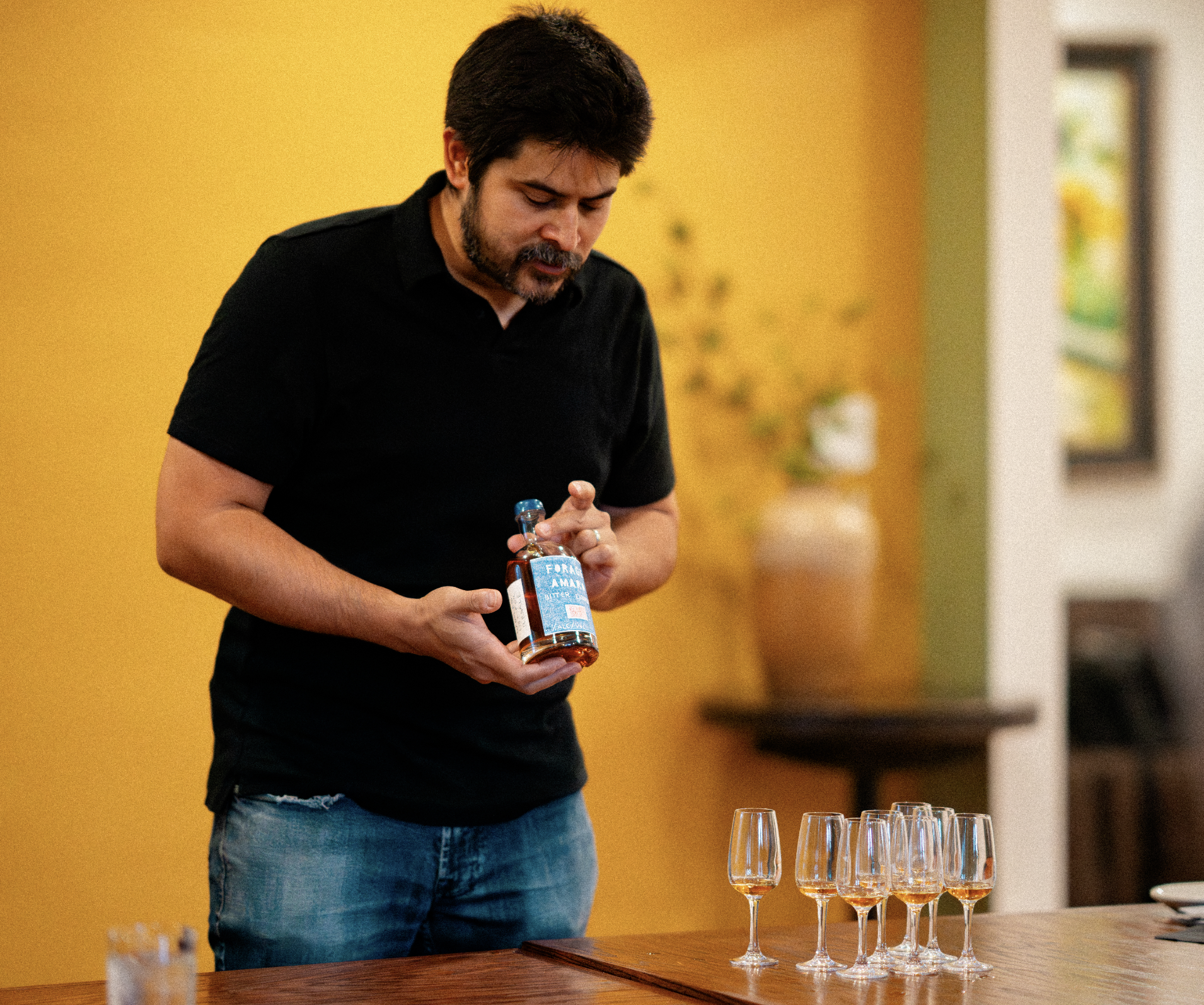“I
’ll be honest,” says distiller Ivar Aass without a hint of irony. “Forage Amaro is my least favorite thing to make.”
It’s not that he dislikes the result. Quite the opposite is true. But as a one-man operation, the process of foraging is both time-consuming and labor-intensive: walking fields and forests, pulling his car over onto the side of the road on a moment’s notice, watching the weather.
Yet Forage Amaro is a fan favorite at Spirit Lab Distilling, and in the distillery’s 10th-anniversary year, Aass knew he needed to make it. From the beginning, he has been drawn to the idea of turning hyper-local, foraged ingredients into something distinctly Charlottesville. It doesn’t hurt that the ingredients are “free” in one sense (if you don’t count the time or the pantlegs covered with burrs).
Founded in 2015, Spirit Lab Distilling holds the distinction of being Charlottesville’s first licensed distillery. Since then, Aass has developed a devoted following for his handmade, locally sourced, high-quality spirits. His small tasting room has become a word-of-mouth go-to destination for American single malt whiskey, Old Tom gin, brandies crafted from local Virginia fruit, and the occasional special release that customers watch for (like the Forage Amaro). As with almost every new release, it is bought up by the email-list subscribers as soon as it hits inboxes.
Amaro (Italian for “bitter”) is an ancient category of herbal liqueur that is usually aromatic, bittersweet, and commonly served after a meal as a digestif. Historically, amaro began as a medicinal tonic produced by apothecaries and monasteries in Italy, then it evolved into a part of everyday eating and drinking culture. A common recipe is botanicals such as roots, bark, citrus peels, leaves, and flowers steeped in spirit, lightly sweetened, often rested in a barrel, and then blended to taste. While some brands are now globally recognized, many regional styles began with what grew nearby, often foraged.
Forage Amaro is not trying to copy existing amari. Instead, it nods to tradition while also expressing a taste of here. The result is wild, aromatic, and distinctly local amaro that emerged from Aass’ desire to make a liqueur from the pawpaw, a seasonal obsession for many in Virginia.
The original result was pleasant but indistinct, presenting fruity flavors without specifically evoking pawpaw. That experiment evolved into today’s Forage Amaro, a barrel-rested, 44 percent ABV expression whose botanicals change with the season. The current recipe, now in its fourth iteration, features pawpaws and maypops (passionflower), hardy orange peel, perilla (shiso), spicebush berries, autumn olive blossoms, and fig, all gathered in or around Charlottesville when they’re at their best.
I tasted the latest release of Forage at a small gathering of local food and beverage pros in a newly opened event space upstairs at Tavola. Spirit Lab’s amaro was warmly received, with many asking for a second or third pour.
We also had the opportunity to compare the hyper-local amaro to a classic example from Italy. Notably, with Forage, Aass intentionally dials back the sugar to let the botanicals shine and the bitter backbone show.
In the glass, it is light amber and transparent, a clear contrast to the dark, almost opaque amari many people know. The palate, however, is full, powerful, and complex: a tropical-fruit core (banana with a hint of mango) meets warm, woodsy spice (allspice and white pepper) and is lifted by bright citrus-peel flavors and a high-toned cinnamon-mint-anise note. The warm, gently bitter finish lingers well after the sip is complete.
Forage is both seasonal and very limited in quantity. The anniversary release of approximately 150 bottles landed quietly a while back with little fanfare and sold out almost immediately. Aass intentionally held back a small cache in anticipation of the upcoming holiday season, which means there will be another opportunity to snag a bottle, either as an accompaniment to a holiday meal or as a gift. If you see it, don’t hesitate.
Other Virginia amaro and bitter bottlings
Spirit Lab’s Forage stands apart for its combination of foraged botanicals and distilled-spirit base. Here are a few neighbors of interest:
Copper Fox Distillery
(Sperryville and Williamsburg)
Amaro y Arroyo is made with Virginia grain, finished in Virginia barrels, and sweetened with local honey. The producer does not claim local or foraged botanicals.
Artemisia Farm & Vineyard (Bentonville)
Handcrafted, small-batch botanical wines with wild or foraged mid-
Atlantic plants. Wine-based, not a distilled spirit.
Flying Fox Vineyard (Afton)
Four vermouths, one to match
each season
The Wool Factory (Charlottesville)
Red and white vermouths created for the cocktail program at Broadcloth restaurant, also sold at The Workshop (its coffee and wine store).
Rosemont of Virginia (La Crosse)
Partnership bottling with Capitoline Vermouth (Washington, D.C.), widely available in local wine shops.
Availability can be limited, and recipes evolve. Any foraged claims may be batch-specific. Check
current release notes.






